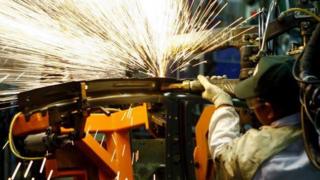- UID
- 20
- Online time
- Hours
- Posts
- Reg time
- 24-8-2017
- Last login
- 1-1-1970
|
|
━━━━━━━━━━━━━━━━━

▼ Top Indian government officials are engaged in a vociferous public debate over the state of the country's economy.
Rajiv Kumar, the head of the government's think tank Niti Aayog, recently claimed that the current slowdown was unprecedented in 70 years of independent Indiaand called for immediate policy interventions in specific industries.
The Chief Economic Adviser, K Subramanian, disagreed with the idea of industry-specific incentives and argued for structural reforms in land and labour markets. Members of Prime Minister Narendra Modi's economic advisory council sound inchoate, resorting to social media and opinion editorials to counter one another.
In essence, the quibble among the members of the economic team of Mr Modi and his government is not about whether India is facing an economic slowdown or not, but about how grave the current economic crisis is.
This is a remarkable reversal in stance of the same group of economists who, until a few months ago, waxed eloquent about how India was the fastest growing economy in the world, generating seven million jobs a year.
To put all this in context, it was less than just two years ago, in November 2017, that the global ratings agency Moody's upgraded India's sovereign ratings - an independent assessment of the creditworthiness of a country - for the first time in 14 years.
Justifying the upgrade, Moody's had then argued that the economy was undergoing dramatic "structural" reforms under Mr Modi.
In the two years since, Moody's has downgraded its 2019 GDP growth forecast for India thrice - from 7.5% to 7.4% to 6.8% to 6.2%.
The immediate questions that arise now are: is India's economic condition really that grim and, if yes, how did it deteriorate so rapidly? (▪ ▪ ▪)
► Please, continue reading this article here: Source |
|